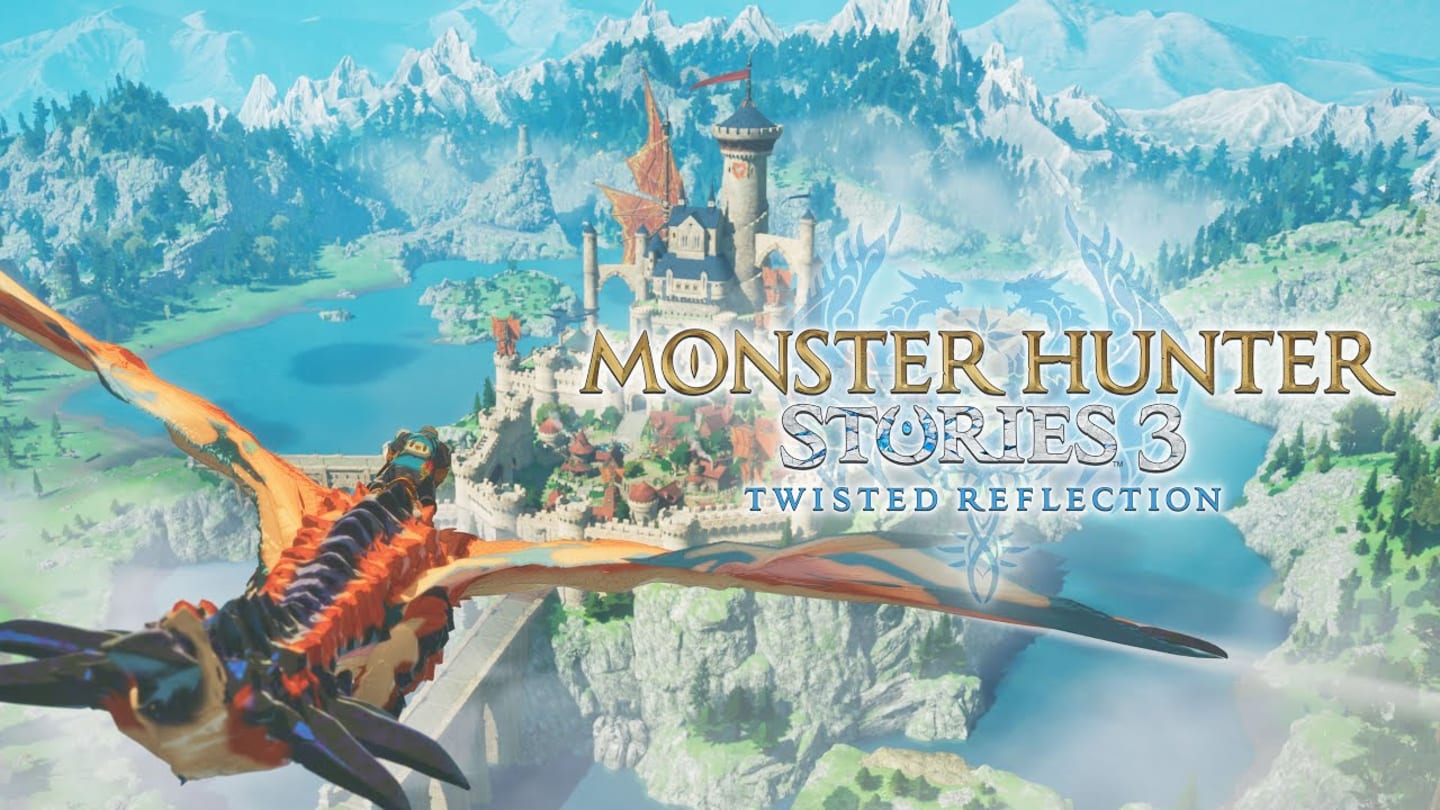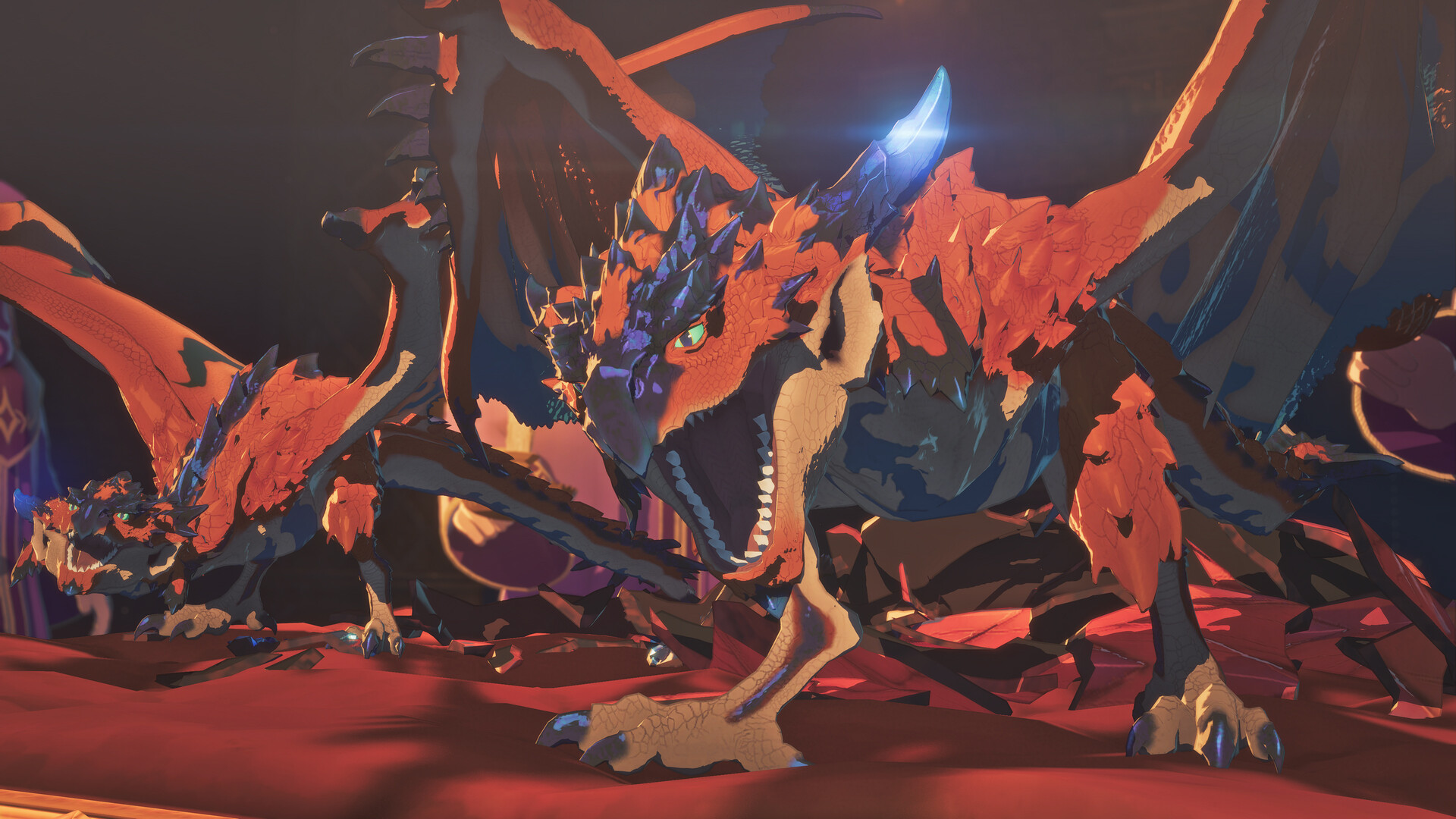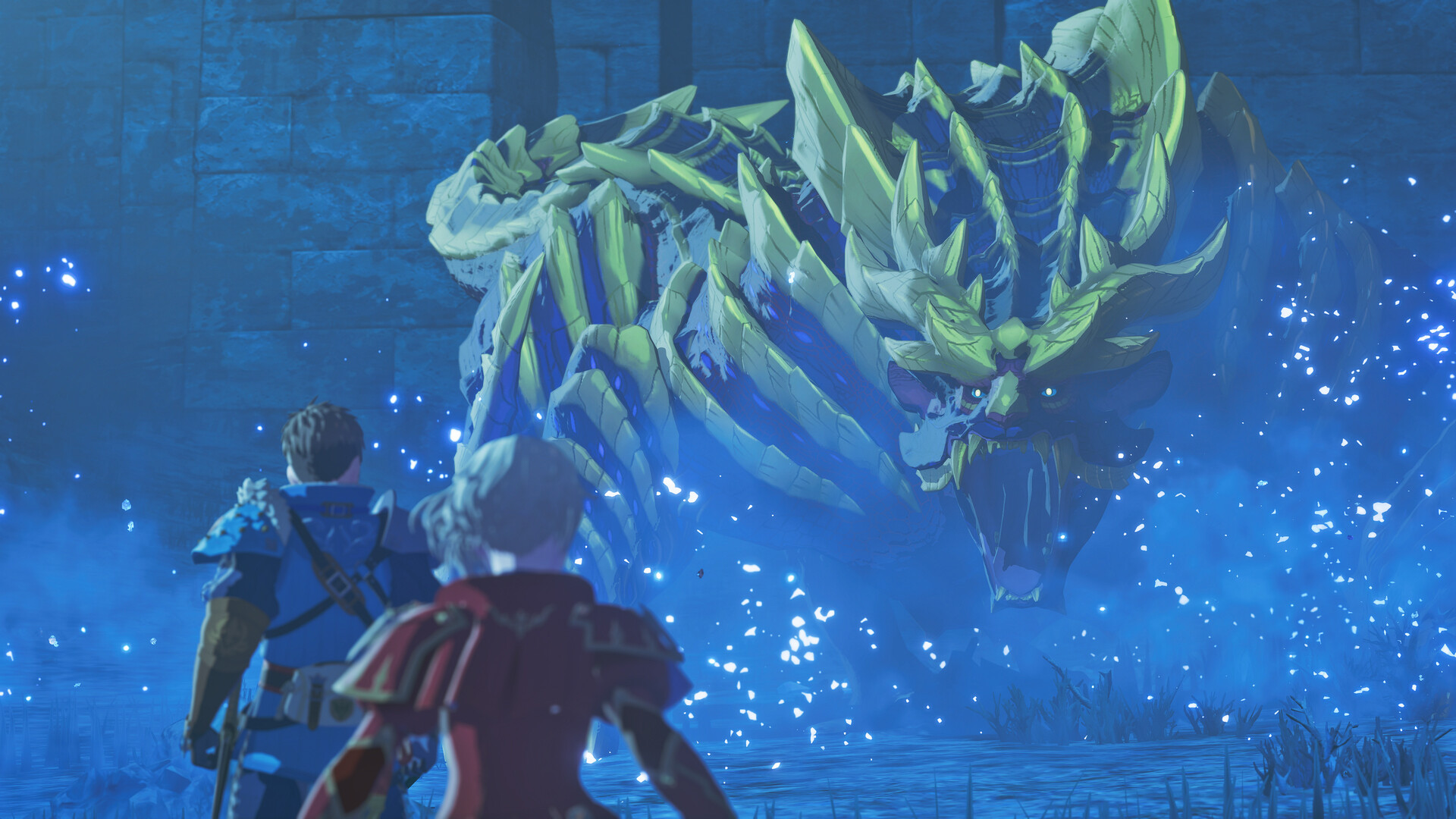
The core of Monster Hunter lies in extended fights that demand thorough preparation, stamina, and precise targeting of monster weak points. Adapting this to a turn-based format could easily become repetitive, which is why Monster Hunter Stories stands out. It skillfully incorporates elements from the core series to create a deep and captivating turn-based battle system. This results in lengthy fights that remain engaging, avoiding the feeling of simply chipping away at an enemy’s health over and over. It’s a surprisingly successful transformation!
The battle system is built around a classic Rock, Paper, Scissors mechanic, featuring Power, Technical, and Speed attack types. You control a party of two characters and their monsters, and can freely choose your attack style. When targeted by an opponent, one of your characters will engage in a one-on-one duel with the opponent’s monster. The character using the winning attack type will inflict significant damage, while the losing character will be unable to act.
However, the game doesn’t tell you what kind of attack a monster will use – you have to learn this by watching how it behaves during a fight. This creates a unique rhythm to battles, as you need to spend the first few turns figuring out its patterns before you can fully commit to your attack.
Even after you figure that out, there’s still a lot to think about. You have your monsters, which you can use in battles that work similarly to the Pokémon games. Usually, each monster only knows one type of attack, so you’ll have to swap them in and out to do the most effective damage. Also, if both your monster and its rider use the same type of attack at the same time, a successful hit will trigger a double attack, dealing even more damage.

As a fan, I’m really excited about how much choice there is in weaponry. You can switch between slashing, blunt, and piercing weapons whenever you want during a fight, which is awesome! And it’s not just about the weapons themselves – different damage types are way more effective against specific body parts. Oh, and get this – the limb targeting is a huge deal in this game! In Stories 3, a lot of the boss monsters are corrupted, making them super powerful and aggressive. To take them down, you need to break the crystals stuck to them, but be careful – targeting those crystals will trigger a really strong counterattack. It adds a lot to the strategy, honestly!
The main enemy I faced in this preview presented a really compelling challenge. It had an ability that greatly strengthened its arms, but it also left the crystals on its back exposed. This forced me to make a difficult strategic decision: should I attack the crystals to gradually weaken the monster, or focus on the arms to avoid a powerful, immediate attack?
That’s without even talking about features like riding your monster during battle to unleash stronger attacks, the break gauge you gradually deplete with your skills, or the stamina system which powers more potent moves. Honestly, it might be too much for the game. I really enjoy turn-based RPGs and usually pick up on complex mechanics easily, but even I felt overwhelmed during a short preview of the early game. I don’t like games that hold your hand for the first 10 hours, but I think Stories 3 could benefit from a slower introduction to all these systems. It needs to pace things better.
Even though there’s a lot of tutorial dialogue, the game does a good job of giving its characters distinct personalities. It uses the familiar setup of a new recruit’s first day – as a ranger checking out local monsters – to teach you the ropes. However, instead of *you* being the newbie, you’re the seasoned pro, and you get to mentor someone else. This is a more welcoming experience for returning players than constantly being talked down to.

Even though everyone learns differently, it all really comes together during the boss fight. I had to think strategically to figure out the attacks coming my way, choose the best monster to defend against them, alternate between normal and special attacks to manage my stamina, and slowly defeat the enemy by finding its weaknesses.
This brings us back to my initial positive comments about the series. Stories 3 successfully adapts a detailed, action-focused combat system – originally made for extended battles – into a turn-based format. It can be a bit challenging to learn, but mastering it is incredibly satisfying and provides a similar feeling of strategic accomplishment as the core games.
That feeling extends beyond just the battles; the game’s art style is also better than ever. This spin-off opts for a more cartoonish look compared to the main series’ realistic graphics, but it’s equally beautiful, and sometimes even more so. Although the monsters might not seem as scary in this style, they appear much more lively and colorful, giving them more personality – and that’s key in a game where you’ll be befriending and battling *with* monsters, not just against them.
Overall, Monster Hunter Stories 3 successfully continues the series’ legacy, keeping it as vibrant as ever. It’s a joy to experience these familiar worlds presented in a fresh way, both in how you play and the story you experience, and the developers clearly understand this. The turn-based combat is surprisingly deep, but it should still be enjoyable for players who prefer something different from the fast-paced action of the main Monster Hunter games. Importantly, the story focuses on living alongside the monsters of this world, rather than simply seeing them as sources of materials for armor and weapons.
More features on DBLTAP:
Read More
- Bitcoin’s Ballet: Will the Bull Pirouette or Stumble? 💃🐂
- XRP’s Soul in Turmoil: A Frolic Through Doom & Gloom 😏📉
- Dogecoin’s Big Yawn: Musk’s X Money Launch Leaves Market Unimpressed 🐕💸
- ‘Jujutsu Kaisen’ Season 3 to Kick Off with Double Episode Premiere – Watch the Trailer
- 🚀 Doge’s Zero-Hour: Will It Go From Hero to Zero? 😱
- Deepfake Drama Alert: Crypto’s New Nemesis Is Your AI Twin! 🧠💸
- H World Group’s 49% Surge: A Fund’s Petty Victory
- RLUSD’s $1B Triumph: A Tale of Trust, Tea, and Tokens! 🕊️💸
- Market Reflections: AI Optimism and Inflation Data Propel Stocks on December 19
- Swap Kraft Heinz for Costco: A Wodehousian Investment Tale 🍌
2025-10-03 17:47